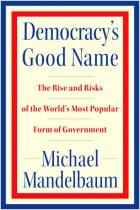Join getAbstract to access the summary!

Join getAbstract to access the summary!
Richard C. Bush
How Hong Kong Got To This Point
Order from Chaos
Brookings Institution, 2019
What's inside?
Hong Kong protesters risk overplaying their hand.
Recommendation
Hundreds of thousands of pro-democracy protesters have been taking to the streets of Hong Kong demanding greater autonomy from China. Richard Bush, a senior fellow at the Brookings Institution’s Center for East Asia Policy Studies and a former Hong Kong resident, explains the history behind the mass protests in a short, informative essay. He ends his essay with a plea to protesters not to overplay their hand and instead find a pragmatic solution to their legitimate political aspirations.
Summary
About the Author
Richard C. Bush is a senior fellow at the Center for East Asia Policy Studies at the Brookings Institution.


















Comment on this summary